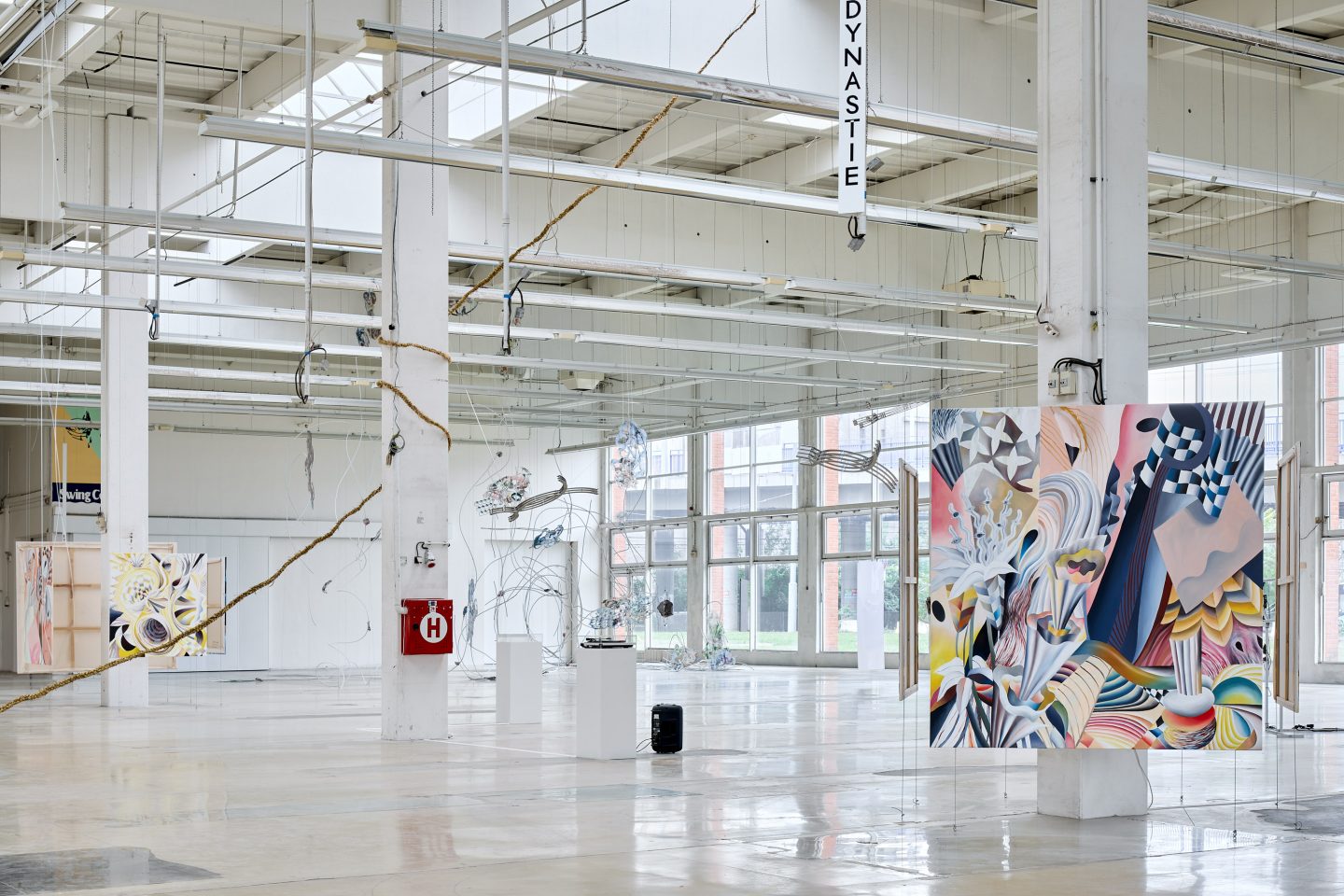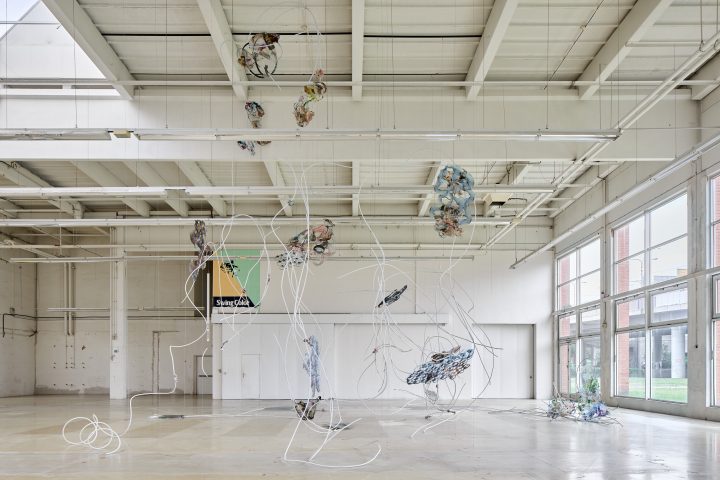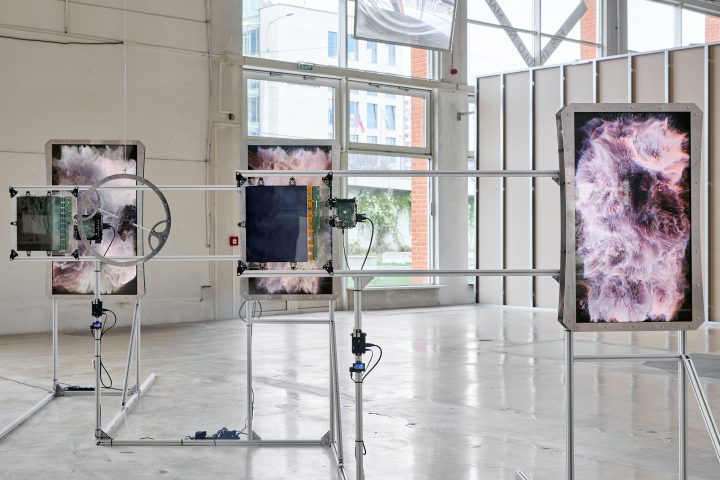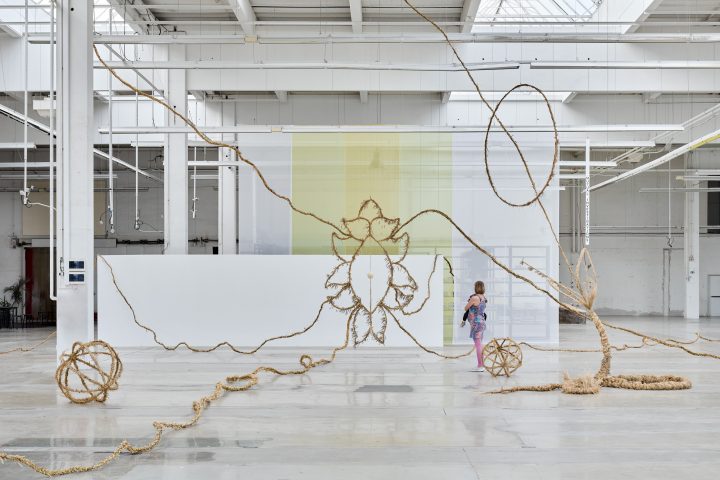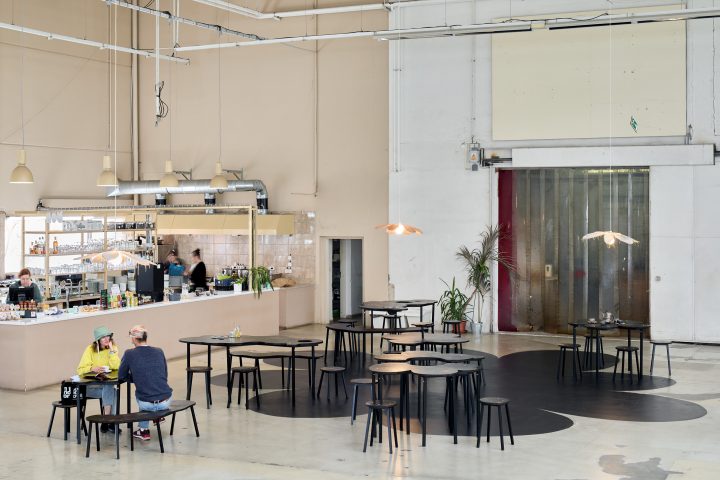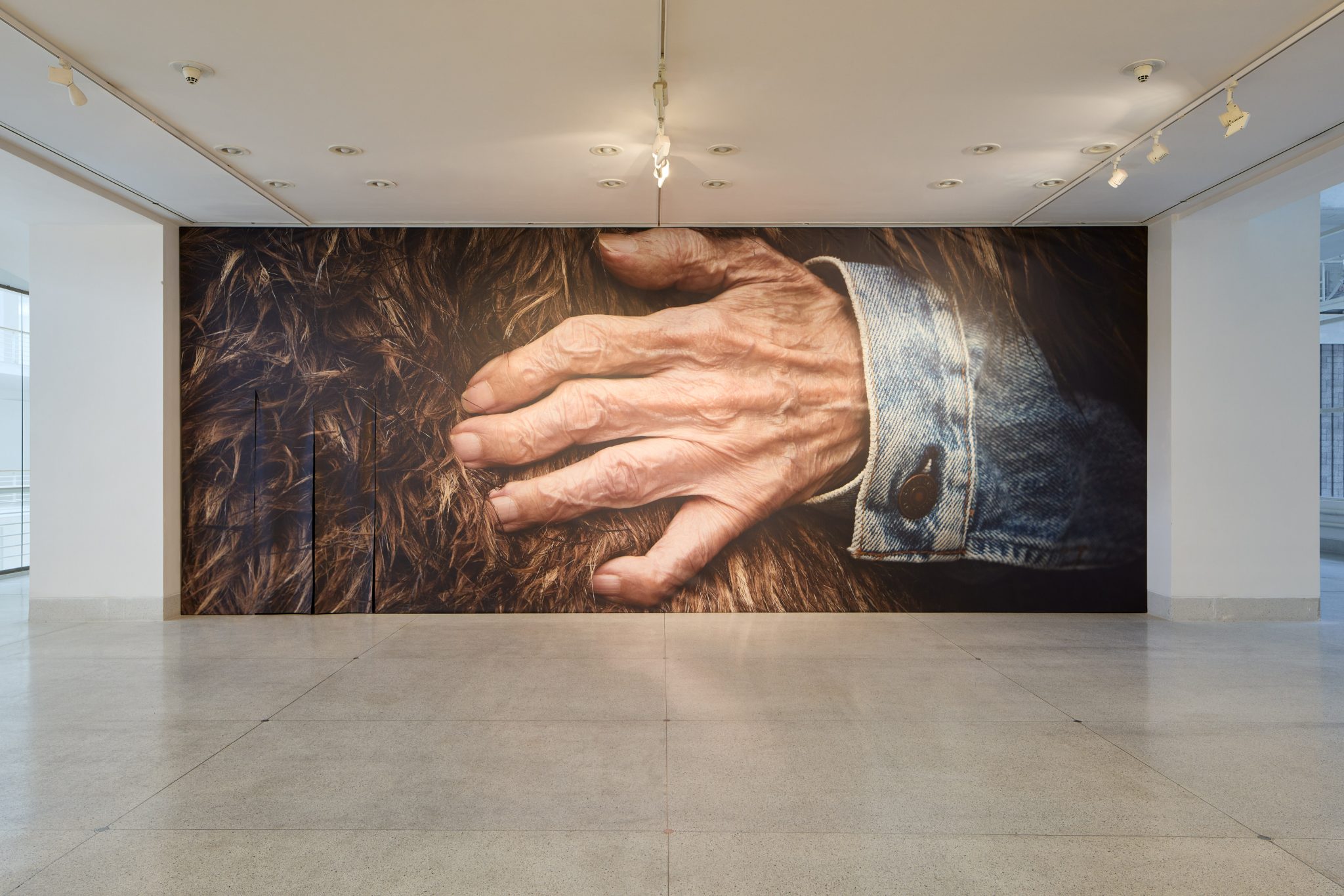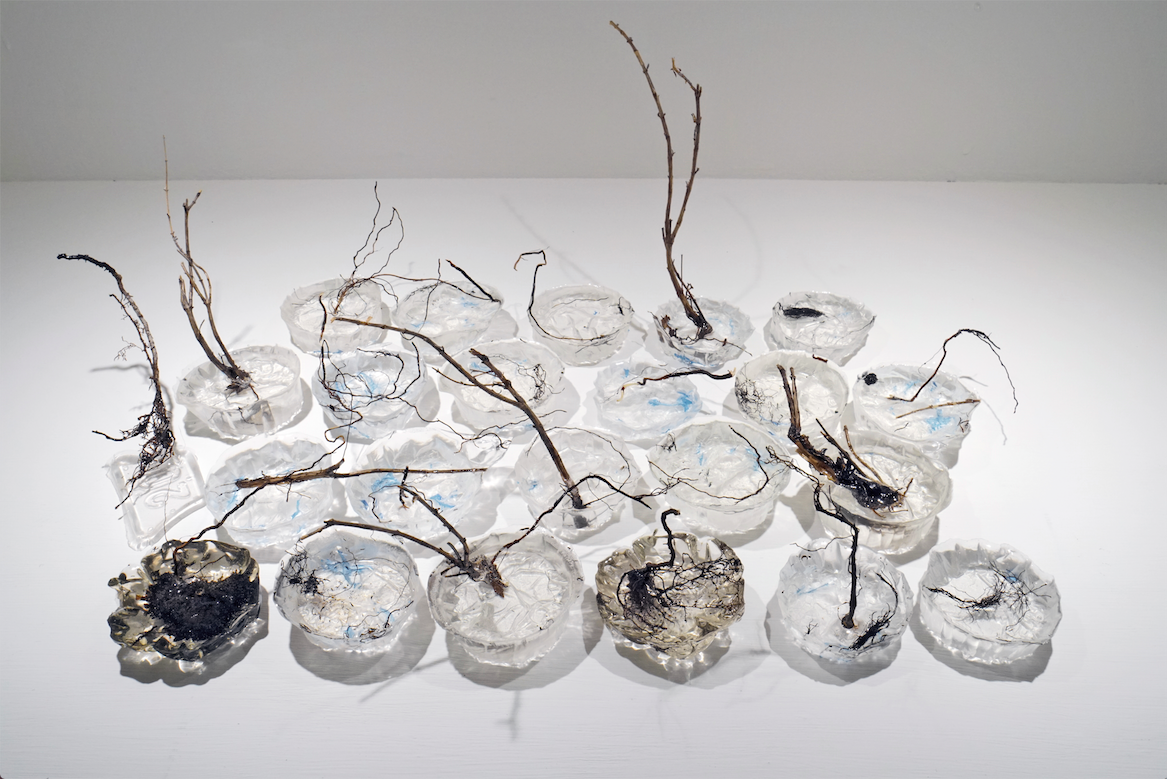Every year the Jindřich Chalupecký Award is awarded to five artists under 35.[1] This year’s laureates are Kryštof Brůha, Lenka Glisníková, Petra Janda, Gabriela Těthalová and Stony Tellers, accompanied by the guest contribution of Dutch artist Jonas Staal. In the curatorial statement, ‘collectivity’ can be vaguely recognized as an overarching theme, articulated through the proposal that we are all confronted with a multitude of hardships that, however, affect us differently. A promising approach that might speak to an intersectional exploration of the current state of our world. By reflecting on current day issues like the influence of humankind on our planet, the question of labor, anticipation of a dystopian future and coexistence between multiple species, the artists propose a worldview where today’s world is approached as a complexity that asks for a collective effort to facilitate healing and renewal. I question, however, if this collectivity can be reached through an exhibition of the format that is proposed here.
Overall, collectivity is something that is up in the air throughout the exhibition but that only materializes partly in the work of Petra Janda, a big installation of braided straw which is the outcome of a collective effort through co-braiding with others and the work Burnout Space by the collective Stony Tellers. Theirs is an installation consisting of tables, stools, handmade tableware, herbal tea, handmade blankets and some growing fresh herbs. It is a space where people gather and meet each other, a place of encounter and sharing. Although the curatorial team in their introduction to the exhibition claims that the work is ‘largely based on active audience engagement,’ the collective lacks adequate articulation of the relational aesthetic or public engagement aspect of the work.
This year’s international guest is Jonas Staal, his installation Propaganda Station houses seven videos, together spanning a good 108 minutes of screentime. Almost impossibly consumable in a single visit, the videos speak of the power of propaganda in different situations. Staal reflects on the alteration of narrative and their influence; geared towards large groups to enhance the domination of the propagandist. It is almost ironic to encounter Staals practice in the setting of this award-show. Through his criticism of propaganda, Staal, for me, touches upon the core of why this exhibition fails to truly speak of collectivity. Although recent efforts led to less emphasis on competition through the choice for five laureates rather than five nominees of whom one winner, the Jindřich Chalupecký Award is still a propaganda tool, like most awards and prizes are.[2] They seek to promote (young) artists but by doing so, differ the ‘chosen ones’ from the herd, sustaining hierarchies and promoting discrepancy amongst the young generation of makers.
Collectivity is of vast importance when working together for a better world and an urgent topic to highlight within exhibitions as well. While in this framework collectivity stays merely at the surface, we need to be patient to see what the future changes of the Jindřich Chalupecký Award will bring. Maybe trying, failing, but getting up and trying again is the only thing we can do – and if we would dare to do it collectively, perhaps once upon a time we might succeed.
[1] The award has announced that starting next year, the number of laureates will be decreased to three and the age limit will be removed.
[2] I want to give credit where credit is due and say that this initiative came from the 2020 laureates.





